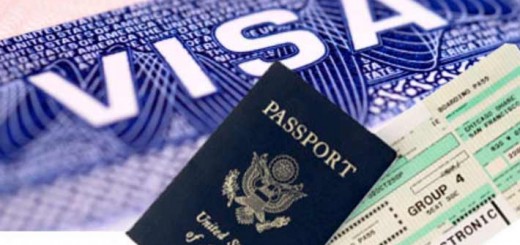US Visa Restrictions Relaxed for Asian Students
More Asian science students are expected to a apply for US university places after Washington’s decision to relax tough visa rules – a policy criticized as an obstacle to attracting researchers to the country.
But Friday’s move by the US State Department could also deprive universities in other countries that had hoped to benefit by recruiting students who might otherwise have gone to the US.
“This is good news for us,” said Martin Bennett, director of international services at Ball State University, who was in Bandra, a suburb of Mumbai, for the institution’s first recruitment drive in India at the weekend.
Students from India form the largest single national group at Ball State, which offers physics, biology and natural resources courses popular with Indian students.
The number of US student visas issued to Indians fell from 18,776 in 2002 to 16,891 in 2004, according to the US embassy in Delhi.
“There has been a perception that the US was getting tighter on allowing foreign students and this change will help us,” said Jason Combs, international admission representative at Savannah College of Arts and Design in the US state of Georgia, who was also at the Bandra recruitment fair.
Universities elsewhere, however, might not see their Asian student rolls rise as fast as they had hoped.
The UK is still the second most successful country after the US at attracting overseas students, and those from Asia are the fastest growing group.
Demand for 677,000 places for overseas students is forecast by 2015, and British universities have benefited from a 12 per cent increase in demand from the Middle East and Asia since the US introduced student visa restrictions two years ago. But the sector is concerned about the London government’s decision last week to double the costs of student visa extensions.
“We must be concerned about anything that makes our competitors more accessible for international students. It will have a negative impact on us,” said Neil Kemp, director of UK education marketing at the British Council, which promotes British education and culture.
Income from overseas education has become an important sector for Australia, with annual exports and associated income reaching A$5.2bn ($4.1bn, €3.2bn, £2.2bn) in 2002-03. Overseas students are also making up for a decline in domestic Australian enrolments. Enrolments of overseas students last year rose 6.2 per cent and made up 22 per cent of the total.
Jacqui Elson-Green, general manager of global education services at IDP Education Australia, said Australian universities remained competitive based on the portability of qualifications and efforts to ensure standards. She said an Australian business degree cost about $10,000 (€7,760, £5,360) for tuition fees, compared with $14,700 in the UK, $18,700 at a US public institution and about $29,000 at a US private institution.
Singapore and Malaysia had hoped to benefit from the tough US visa restrictions by attracting Asian students as both seek to become education hubs for the region. Singapore has been planning to more than double the number of foreign students to 150,000 by persuading more than 10 foreign universities to set up facilities or establish joint programs with local universities. Malaysia has sought to raise the number of foreign students this year by 10,000 to 50,000, mostly from Indonesia and China.
But the benefit to US institutions may not be immediate. Students in China and India said that while the US offered an excellent education, they were not altering their plans as a result of the visa policy change.
“A lot of my friends had applied for a US visa but were unable to get one” and have chosen to study in Europe or Australia, says Joey, an animator in the southern Chinese city of Shenzhen. The US visa application procedures were “too complicated and too inconvenient”, he added.









